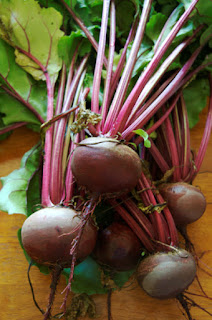
The orange (specifically, the sweet orange ) is the fruit of the citrus species Citrus × sinensis in the family Rutaceae. The fruit of the Citrus sinensis is called sweet orange to distinguish it from that of the Citrus aurantium , the bitter orange . The orange is a hybrid, possibly between pomelo ( Citrus maxima ) and mandarin ( Citrus reticulata ), cultivated since ancient times.
Probably originated in Southeast Asia, oranges were already cultivated in China as far back as 2500 BC. Between the late 15th century and the beginnings of the 16th century, Italian and Portuguese merchants brought orange trees in the Mediterranean area. The Spanish introduced the sweet orange to the American continent in the mid-1500s.
Orange trees are widely grown in tropical and subtropical climates for its sweet fruit, which can be eaten fresh or processed to obtain juice, and for its fragrant peel. They have been the most cultivated tree fruit in the world since 1987,
and sweet oranges account for approximately 70% of the citrus production. In 2010, 68.3 million tonnes of oranges were grown worldwide, particularly in Brazil and in the US states of California and Florida.
The origin of the term orange is presumably the Sanskrit word for "orange tree" (नारङगम्, nāraṅga ), whose form has changed over time, after passing through numerous intermediate languages. The fruit is known as "Chinese apple" in several modern languages. Some examples are Dutch sinaasappel (literally, "China's apple") and appelsien, or Low German Apfelsine. In English, however, Chinese apple usually refers to the pomegranate.
All citrus trees belong to the single genus Citrus and remain almost entirely interfertile . This means that there is only one superspecies that includes grapefruits, lemons, limes, oranges and various other types and hybrids. As the interfertility of oranges and other citrus has produced numerous hybrids, bud unions and cultivars, their taxonomy is fairly controversial, confusing or inconsistent. The fruit of any citrus tree is considered a hesperidium (a kind of modified berry ) because it has numerous seeds, is fleshy and soft, derives from a single ovary and is covered by a rind originated by a rugged thickening of the ovary wall.

Different names have been given to the many varieties of the genus. Orange applies primarily to the sweet orange – Citrus sinensis ( L. ) Osbeck. The orange tree is an evergreen, flowering tree, with an average height of 9 to 10 metres (30 to 33 ft), although some very old specimens can reach 15 metres (49 ft). Its oval leaves, alternately arranged, are 4 to 10 centimetres (1.6 to 3.9 in) long and have crenulate margins. Although the sweet orange presents different sizes and shapes varying from spherical to oblong, it generally has ten segments ( carpels ) inside, contains up to six seeds (or pips ) and a porous white tissue – called pith or, more properly, mesocarp or albedo – lines its rind. When unripe, the fruit is green. The grainy irregular rind of the ripe fruit can range from bright orange to yellow-orange, but frequently retains green patches or, under warm climate conditions, remains entirely green. Like all other citrus fruits, the sweet orange is non - climacteric. The Citrus sinensis is subdivided into four classes with distinct characteristics : common oranges, blood or pigmented oranges, navel oranges and acidless oranges.
Other citrus species also known as oranges are :
-the bitter orange ( Citrus aurantium ), also known as Seville orange, sour orange – especially when used as rootstock for a sweet orange tree –, bigarade orange and marmalade orange;
-the bergamot orange ( Citrus bergamia Risso ). It is grown mainly in Italy for its peel, which is used to flavour Earl Grey tea;
-the trifoliate orange ( Poncirus trifoliata ), sometimes included in the genus (classified as Citrus trifoliata ). It often serves as a rootstock for sweet orange trees, especially as a hybrid with other Citrus cultivars. The trifoliate orange is a thorny shrub or small tree grown mostly as an ornamental plant or to set up hedges. It bears a downy fruit similar to a small citrus, used to make marmalade. It is native to northern China and Korea, and is also known as "Chinese bitter orange" or "hardy orange" because it can withstand subfreezing temperatures; and
-the mandarin orange ( Citrus reticulata ). It has an enormous number of cultivars, most notably the satsuma ( Citrus unshiu ), the tangerine ( Citrus tangerina ) and the clementine ( Citrus clementina ). In some cultivars, the mandarin is very similar to the sweet orange, making it difficult to distinguish the two. The mandarin, though, is generally smaller and oblate, easier to peel and less acid.
Orange trees are generally grafted . The bottom of the tree, including the roots and trunk, is called rootstock, while the fruit-bearing top has two different names: budwood (when referring to the process of grafting) and scion (when mentioning the variety of orange). (From Wikipedia)
Juice recommended
-
Orange press juice
 Ingredient
Ingredient









_1_Luc_Viatour_edit.bmp)









_leaves.bmp)























